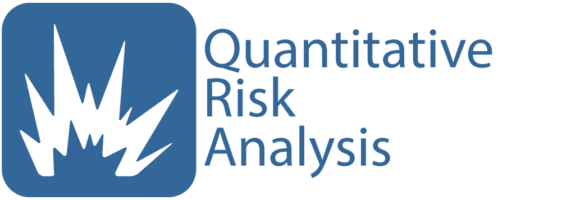Our experts perform a variety of Quantitative Risk Analysis (QRA) & (fQRA) services for complicated process scenarios. Our engineering services include a full range of analytical equations.
Quantitative Risk Analysis (QRA) & (fQRA)
Our engineers use this rigorous methodology to evaluate the possible consequence and likelihood associated with engineering or technical scenarios. Consequence is typically expressed as the number of fatalities or failures and likelihood of occurrence is typically expressed in frequency as the number of times a year. Event tree analysis and fault tree analysis are typical.
Sometimes as subset of a QRA is required so we perform a Focused Quantitative Risk Analysis (fQRA) analysis and calculations to assist in the determination of the tolerability of risk associated with scenarios and the generation of recommendations to assist in the achievement of tolerable risk levels.
Failure Mode and Effects Analysis (FMEA)
Failure Modes and Effects Analysis is a type of Process Hazards Analysis (PHA) study. PHA is a thorough and systematic technique for analyzing a process for potential hazard scenarios. As per recognized safety standards for PHA, the PHA will address the following items in a qualitative manner:
- The hazards of the process
- The identification of any previous incident which had a likely potential for catastrophic consequences in the workplace
- Engineering and administrative controls applicable to the hazards and their interrelationships such as appropriate application of detection methodologies to provide early warning of release
- Consequences of failure of engineering and administrative controls
- Facility siting
- Human factors
- A qualitative evaluation of a range of the possible safety and health effects of failure of controls on employees in the workplace
- Previous Incidents and near-misses
- Management of Change (MOC) items (if applicable)
Facility Siting
Facility Siting assesses hazards and the potential damage that an explosion, fire, or toxic chemical incident could cause both onsite and offsite.
The engineering service is performed in accordance with American Petroleum Institute (API) Recommended Practice 752 Management of Hazards Associated with Location of Process Plant Permanent Buildings. This will conform to requirements in OSHA Process Safety Management (PSM) Standard 29 CFR 1910.119 for evaluation of “facility siting” in process hazards analysis.
Gaussian Modeling
Gaussian Modeling is useful in determining how a gas will disperse as it leaves a leak outside, in an unobstructed space. Once the leak hits another object, then the dispersion characteristics change, and consideration will be made based on the scenario to use CFD. By modeling a typical leak and then using the model many times at key points in a process, like 360 degrees around a flange, provides a much better analysis for determining what will happen and then the probability of detecting it with a gas detector.
Computational Fluid Dynamics (CFD)
Computational Fluid Dynamics has proven extremely useful in determining the migration of gas in confined spaces like labs, buildings, compressor stations, test stands, battery testing facilities, battery storage facilities, offshore platforms between the decks where space can be confined and finally in drilling rigs where space is getting more confined as rigs get more capable.
Continuing Engineering Support
Functional Safety Management Program maintenance is challenging. Our Continuing Engineering Support team provides a consulting engineer to assist your team as required. Our team of chemical engineers and functional safety experts are available for short or extended periods to function as part of an engineering team for something as simple as verifying SIL calculations or as complex as audits.
For General Inquiries and Software or Training Quotes please contact us by email at [email protected] or call +1-614-451-7031 or use the form below:
Contact - Kenexis
Use this form to contact Kenexis directly. We will respond as soon as possible, usually within one business day. Thank you.
"*" indicates required fields

